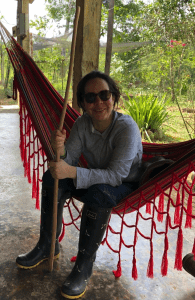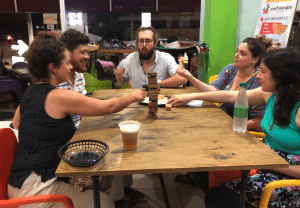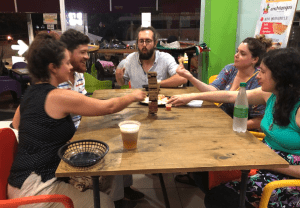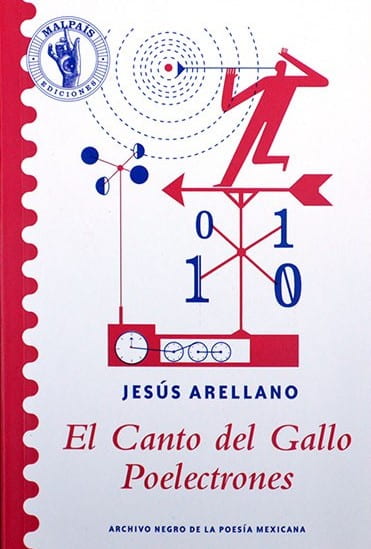Por María Paula Escobar-Tello.
Versión en ingles aquí.
Hay quienes piensan que mantener los sentimientos, las emociones, las individualidades y las identidades por fuera del trabajo de campo, el laboratorio y los experimentos es una regla de oro que garantiza la validez del trabajo científico. Desde este punto de vista, la buena ciencia debe ser neutral y objetiva.
Yo no estoy tan segura y hoy quiero hablar sobre los sentimientos y emociones que he vivido con BioSmart, un proyecto donde ciudadanos británicos, colombianos, chilenos, irlandeses y españoles trabajamos juntos, y sobre cómo esas vivencias me han hecho pensar en lo que queremos decir cuando hablamos de buena ciencia.
Empiezo por contar que soy colombiana y británica. Llevo 20 años en el Reino Unido y cuando voy con el equipo británico a Colombia me lleno de orgullo y alegría al darles a probar ajiaco, arepas, empanadas y aguardiente, y al verlos maravillarse con la fiesta de colores, sabores y texturas que son nuestros mercados de frutas. También me enorgullezco porque los colombianos siempre nos reciben con la calidez y el buen humor que nos caracteriza y que tanto extraño cuando estoy en Inglaterra. Sentir esa calidez, acordarme de la facilidad con que sonreímos los colombianos y de cómo nos volvemos mejores amigos apenas nos conocemos me ha despertado la nostalgia que siento como emigrante. Pero la nostalgia viene acompañada de gratitud, porque es gracias al sistema académico británico que puedo volver a Colombia a trabajar por la gente que quiero. Mi identidad está en el centro de mi trabajo y la pasión y el compromiso con que me esfuerzo por desempeñarlo.
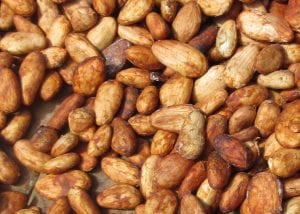
El café, la limonada natural, los jugos, el yogur casero y hasta chocolate recién hervido, hecho con pepas de cacao cultivado en la finca con que nos reciben en todas partes alimentan esos sentimientos de cariño y compromiso. Nosotros correspondemos a esta generosidad y siempre llevamos pan recién salido del horno; y de manjar en manjar aprendemos sobre la vida de los campesinos del Caquetá y ellos de la nuestra en el Reino Unido. Este aprendizaje surge por fuera del laboratorio, antes del trabajo formal de contar especies de plantas e insectos, antes de la entrevista propiamente dicha. Este aprendizaje, así como los sentimientos y emociones que lo acompañan, no hará parte de los resultados que irán en las publicaciones y presentaciones, pero sin él, nuestro quehacer de investigación no representaría lo mismo para todos los involucrados. Es este aprendizaje, repleto de emociones, lo que le da sentido a nuestro trabajo y hoy me siento igual de orgullosa del equipo británico, porque sé que han aprendido a querer al país y a los productores y colegas colombianos tanto como yo. Prueba de ello son las amistades que han construido y el carácter con que trabajan: han pasado tiempo con los niños de los productores, se han mantenido en contacto con productores, conductores y colegas. Nuestro compromiso se ve también en cada madrugón para no llegarle tarde a los productores y colegas que nos esperan. Nos inspira su duro trabajar y no queremos afectarles su día de trabajo. La buena ciencia es considerada y la consideración es fruto de los sentimientos, de modo que siempre estamos listos para salir a campo a las seis de la mañana sin falta. Me conmovió el sentir que el cariño es de doble vía. Los años y la vida citadina me dificultan el caminar por el terreno que es a veces empinado y pantanoso. Los conductores se han convertido en parte del equipo y uno de ellos me sorprendió un día con un regalo. Había escogido una rama de guayabo, la había pelado y pulido y me había hecho un bastón que todavía tengo.
Pero también ha habido otro tipo de emociones. Con demasiada frecuencia los productores se disculpan y nos dicen que se sienten menos y se sienten ignorantes porque no han tenido una educación formal. Esto me despierta rabia, porque sé que esta falta de educación formal y este sentirse inferiores es resultado de un sistema político, económico, social y cultural, de dimensiones globales, que trata a los campesinos con desprecio y negligencia. Les he dicho a cada oportunidad que su nivel de educación formal no es reflejo de lo mucho que valen y que los reconocemos como poseedores de un conocimiento frente al cual nos sentimos humildes. En cada conversación he tratado de devolverles la dignidad que todos les debemos. Esto me ha hecho pensar en la objetividad y la neutralidad. Si por objetividad entendemos la capacidad de entender cuál es el verdadero problema y si las emociones tienen cabida en la buena ciencia entonces yo no quiero ser neutral. He querido pasar más tiempo con ellos y contribuir más allá del conocimiento que producimos juntos.
A veces, este contribuir ha sido real e inmediato. Al terminar la entrevista y habiendo construido una amistad instantánea, como hacemos los colombianos, una persona me contó que esa tarde había venido al pueblo no sólo para hablar conmigo, sino también para vender unos pollos. Hubiera preferido venderlos ya más grandes para sacarles un mejor precio, pero había que pagar el recibo de la luz y no había plata suficiente. Pero no los había podido vender bien y ahora no tenía ni los pollos ni la plata para pagar el recibo. Los pollos son comida e ingreso a futuro y la electricidad es una necesidad básica. Le di de mi propia plata. Algunos podrán pensar que mi gesto estuvo mal porque genera una cultura de “asistencialismo” y que sería mejor si los ayudo a ser más productivos para que en el futuro no tengan problemas de plata. Habrá otros más cínicos que me dirán que de pronto el cuento era puro invento. Yo no dudé de la palabra de esta persona y aunque mi trabajo aspira a ayudar a aliviar la pobreza en el largo plazo, el corazón se sintió mejor ayudando en ese instante con lo urgente. ¿Habré hecho bien? Siento que sí.
Este preguntarme por la neutralidad me ha pasado con otras historias y otras emociones. Por ejemplo, una mañana lloré mares de lágrimas cuando una mujer improvisó un discurso de quince minutos. De pie frente al portón de su casa y con la frente muy en alto, quiso saber si veníamos de parte de las compañías mineras y petroleras, cuya presencia la llena de miedo por el futuro de sus hijos y de angustia por lo efectos de los proyectos extractivos sobre la tierra en que creció. También nos contó cómo algunos implementadores de proyectos, no todos, no la han dejado participar en programas agroambientales y la han discriminado por ser mujer. Todos quedamos conmovidos, incluidos su marido y sus hijos. ¡Qué mamá y qué esposa tan valiente tienen!, les dije. Al despedirnos nos dimos un abrazo fuerte y largo y sentí de nuevo la necesidad y el deseo de hacer más.
A veces, ese deseo se siente urgente. Mientras escribo, tengo el corazón apretado porque el dueño de la finca con más y mejor bosque, piensa que vender su tierra es la única opción porque tiene muchas deudas. La única actividad productiva es la ganadería, pero él no quiere tener vacas; prefiere cuidar el bosque, pero eso no le da plata. ‘Ayúdeme a vender,’ me dice, ‘pero a alguien que cuide como yo he cuidado.’
Siento rabia por las injusticias que padecen estas personas. No puedo y no quiero ser neutral. Me siento confundida y no sé si debo preocuparme porque estoy tratando de encontrar el modo de ser al mismo tiempo investigadora y activista, empleada de una Universidad y agitadora de una campaña de solidaridad. Quiero ayudar, y mientras le echo cabeza al cómo, se me ocurre que es posible que la ciencia sea mejor cuando se hace dejando juntar al corazón con la labor académica. Quiero pensar que mis sentimientos y mis emociones le imprimen al quehacer de la investigación académica un sentido diferente de lo bueno en que el impacto no es sólo lo que sale al final del proyecto, en las publicaciones o en los eventos de cierre sino en la manera como va tocando y enriqueciendo, desde el principio, las vidas de todos los involucrados.
Quiero pensar que hacer buena ciencia parte del reconocimiento de las emociones hasta el punto de escribir públicamente sobre ellas. Reconocer la vulnerabilidad es exponerse, pero abrazarla lo enriquece a uno como persona y como investigador. Al fin y al cabo, lo uno es inseparable de lo otro.
María Paula Escobar-Tello es Geógrafa Humana y trabaja como Docente de planta en la Escuela de Veterinaria de la Universidad de Bristol investigando puntos de tensión entre la producción pecuaria y el medio ambiente; en particular desde la mirada de los estudios en gobernanza y regulación, geografías ‘más-que-humanas’, ecología política y política de la materialidad.
Este blog está originalmente publicado en el blog de BioSmartAmazonia, donde se incluye además una versión en audio.


